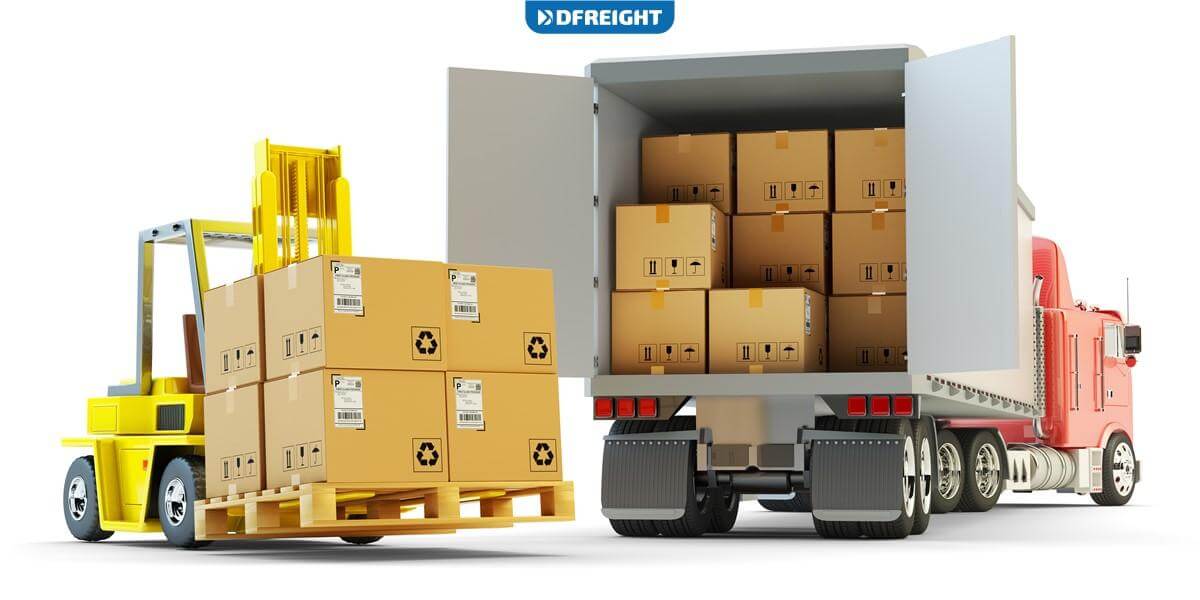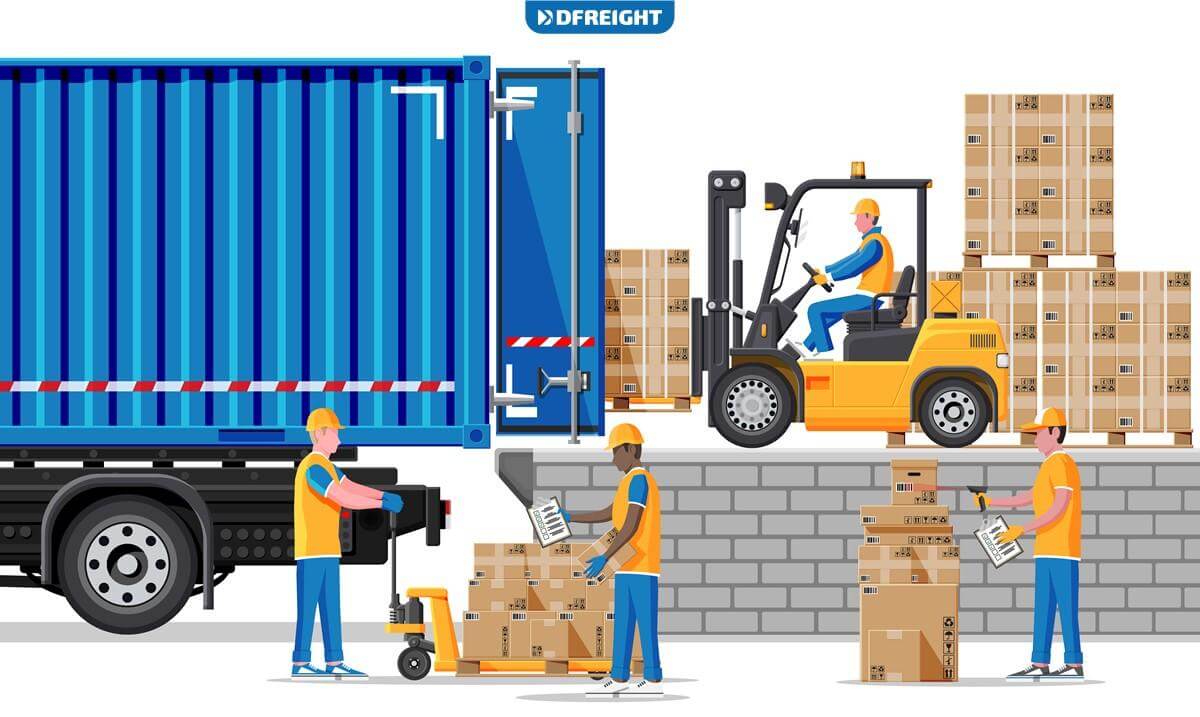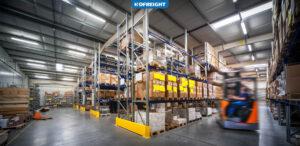If you are wondering what Less-Than-Truckload (LTL) shipping is and whether it is the right shipping option for your business, you have come to the right place. In this blog post, we will discuss everything you need to know about LTL shipping, from how it works to the benefits and challenges. We will also provide some tips on how to choose the right LTL carrier for your needs. So, if you are curious to learn everything about LTL shipping, keep reading.
Table of Contents
Less-Than-Truckload (LTL) shipping: Definition
Less-than-truckload (LTL) shipping is a trucking service where businesses ship smaller loads that don’t require an entire truck. LTL shipping is a cost-effective option for businesses that need to ship smaller loads of freight. It is also a good option for businesses that need to ship freight on a regular basis but don’t have the volume to justify shipping via a full truckload (FTL).
LTL shipping companies will pick up your freight and consolidate it with other shipments headed to the same general destination. This consolidation helps to keep costs down for everyone involved. When your shipment arrives, the LTL carrier will unload your freight and deliver it to the final destination.
LTL Shipping vs. FTL Shipping
Less-than-truckload shipping is a type of shipping where your goods are consolidated with the goods of other shippers and are transported on a shared truck. This contrasts with FTL shipping, where you would have an entire truck to yourself. The main benefit of LTL shipping is that it is cheaper than FTL shipping since you share the truck’s cost with other shippers. However, it can take longer since your goods will need to be consolidated with the other shipments, and there is a greater risk of damage since your goods will be handled more.
The Benefits of LTL Shipping
Some of the benefits of LTL shipping include:
- It is generally more cost-effective than FTL shipping.
- It is more flexible in terms of shipment size.
- It can be faster than FTL shipping since LTL carriers make multiple stops.
- It is more environmentally friendly than FTL shipping.
The Challenges of LTL Shipping
Some of the challenges of LTL shipping include:
- It can be more complicated than FTL shipping since more variables are involved.
- It can be more challenging to track your shipment since it makes multiple stops.
- It can take longer for your shipment to reach its destination.
When to Choose Less-Than-Truckload Shipping?

Less-Than-Truckload shipping is ideal for smaller shipments up to 15,000 pounds, generally speaking. If you do not have sufficient freight to fill an entire trailer but still want to save money on transportation, you should think about shipping it LTL.
The following are regarded as “LTL accessorial services,” which may tack on an extra charge per service:
- Residential Service: Residential service for LTL shipping is a type of shipping service designed for shipments going to a residential address. This shipping service is typically more expensive than shipping to a commercial address, but it can be worth it for certain types of shipments.
- Collect on Delivery (COD): COD is a type of LTL shipping in which the recipient is responsible for paying the shipping fees when they receive the shipment. This type of shipping is often used for high-value items or items that are difficult to ship.
- Liftgate Delivery Service: Liftgate Delivery Service is a service option for Less-Than-Truckload (LTL) shipments that allows the driver to use a hydraulic liftgate to lower your load to the ground from the back of their truck. This service is typically used for shipments that are too large or heavy to be safely unloaded by the customer.
- Inside Pickup/Delivery: You can ask for this service when the LTL carrier is requested to enter the building at the shipper to pick up the cargo to load or at the consignee when it is asked to deliver the freight indoors.
- Limited Access: You can request this service for pick-ups or deliveries at locations with restricted carrier access, such as remote areas, building sites, camps, specific event locations, and strip malls.
- Arrival Notification: It is a typically free, optional service that provides you with email or text notifications when your LTL shipment arrives at the destination.
- Reweigh and Inspection Fee: The carrier will automatically assess a fee to reweigh and/or reclassify your shipment if they have reason to believe that the declared weight and/or class of your shipment are incorrect.
Considerations Before Making an LTL Shipment
When you are shipping Less Than Truckload (LTL), there are a few things you need to do to prepare your shipment.
First, you need to ensure your shipment is properly packaged. This means that all items are appropriately wrapped and secured so they will not shift during transit. You will also need to label your shipment with the appropriate shipping information clearly.
Next, you will need to calculate the weight and dimensions of your shipment. LTL carriers use a standard pricing system based on the weight and dimensions of the shipment, so it is essential to be accurate. Reweigh and inspection fees will be charged if the carrier detects improper dimensions, weight, and/or freight class.
Finally, you will need to choose a carrier. Many different carriers offer LTL service, so you will need to research each one to find the best option for your needs.
How to Pack an LTL Shipment
Less than Truckload (LTL) shipments weigh between 151 and 20,000 pounds. The average LTL shipment is between 1,000 and 5,000 pounds. If your shipment falls within this range, you will need to determine the dimensions of your shipment and use the appropriate pallet size and type.
To prepare your LTL shipment for pickup, you will need to:
1. Choose the right pallet: You will need to use a wood or plastic pallet that is the appropriate size and strength for your shipment. Be sure to select a pallet that is clean and free of debris.
2. Assemble your shipment: Be sure to properly secure your shipment on the pallet using a stretch wrap, shrink wrap, or strapping. All items should be placed on the pallet to prevent them from shifting during transit.
3. Cover your shipment: Once it is assembled, you will need to cover it with a weather-proof tarp or plastic sheeting. This will help protect your cargo from the elements during transit.
4. Label your shipment: Be sure to clearly label your shipment with all of the necessary information, including the name, address, and phone number of the shipper and consignee, a description of the goods being shipped, the origin and destination of the shipment, and the date of the shipment.
How to Find the Right LTL Carrier for Your Needs

When choosing an Less-Than-Truckload carrier for your shipping needs, there are many factors to consider. The most important thing is to find a carrier with experience shipping the type of product you are shipping. You will also want to find a carrier with a good reputation for on-time delivery and customer service.
Another essential factor to consider is the price. It would help if you got quotes from several carriers to find the best price for your shipping needs. Be sure to compare the prices of different carriers for the exact shipping route to get the best deal. You will also need to consider the size and weight of your shipment when choosing an LTL carrier. Some carriers have the size and weight restrictions, so you will need to find one that can accommodate your shipment.
Finally, you should ensure the carrier you choose has insurance in case your shipment is lost or damaged in transit. This will protect you from financial loss if something happens to your shipment. Considering all these factors, you can find the appropriate LTL carrier for your needs.
The Final Word
There are many factors to consider when choosing a Less-Than-Truckload carrier for your shipping needs. The most important thing is to find a carrier with experience shipping the type of product you are shipping. You will also want to find a carrier with a good reputation for on-time delivery and customer service.
DFreight is a leading provider of Less-Than-Truckload (LTL) shipping services. We have the experience and expertise to handle your LTL shipping needs. We offer competitive pricing and our team is dedicated to providing excellent customer service. Contact us today to get a quote for your LTL shipping needs.
FAQs
What is LTL shipping?
LTL shipping is a trucking service where businesses ship smaller loads that don’t require an entire truck.
How does LTL shipping work?
LTL shipping companies pick up your freight and consolidate it with other shipments headed to the same general destination. This will help keep costs down for everyone involved. The LTL carrier will unload your freight and deliver it to the final destination when it arrives.
What are the benefits of LTL shipping?
It is generally more cost-effective than FTL shipping; it is more flexible in terms of shipment size; it can be faster than FTL shipping since LTL carriers make multiple stops, and it is more environmentally friendly than FTL shipping.
What are the challenges of LTL shipping?
It can be more challenging to track your shipment since it makes multiple stops, and it can take longer for your shipment to reach its destination.














